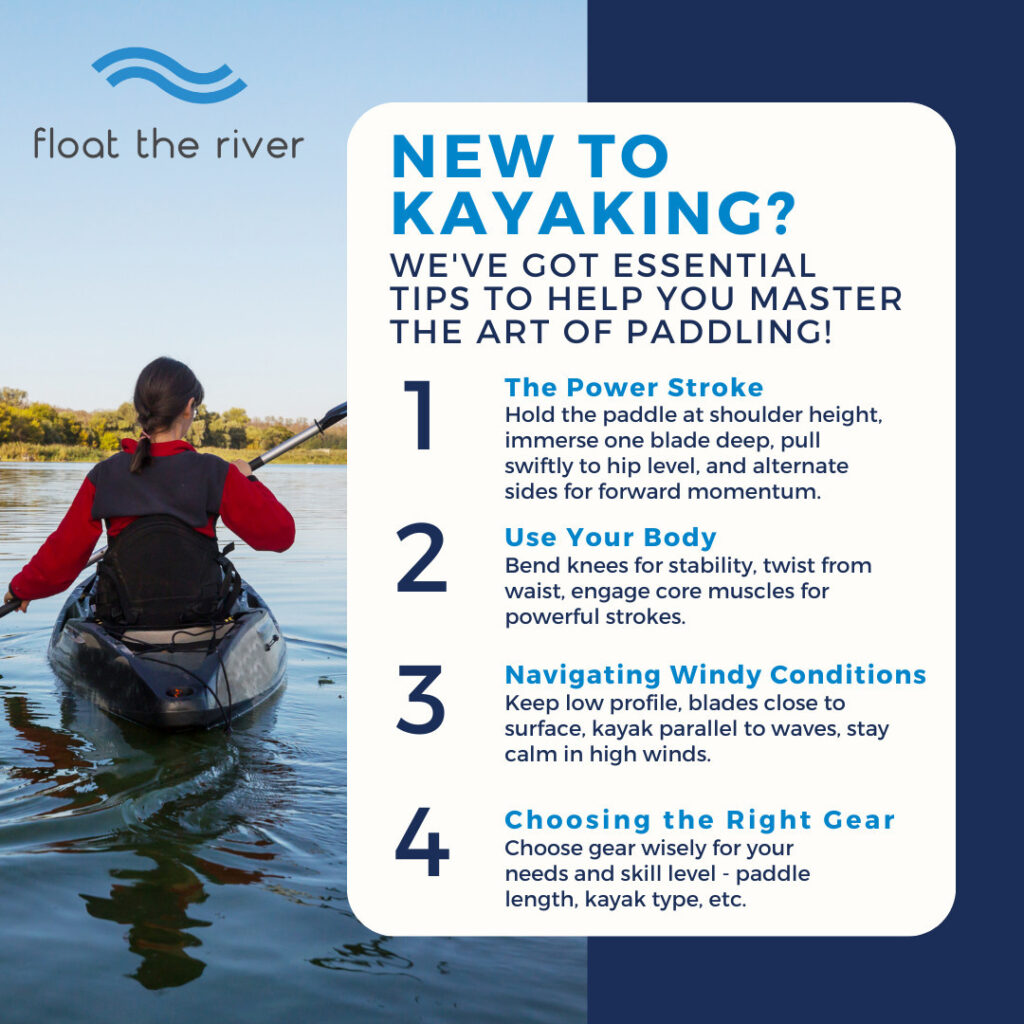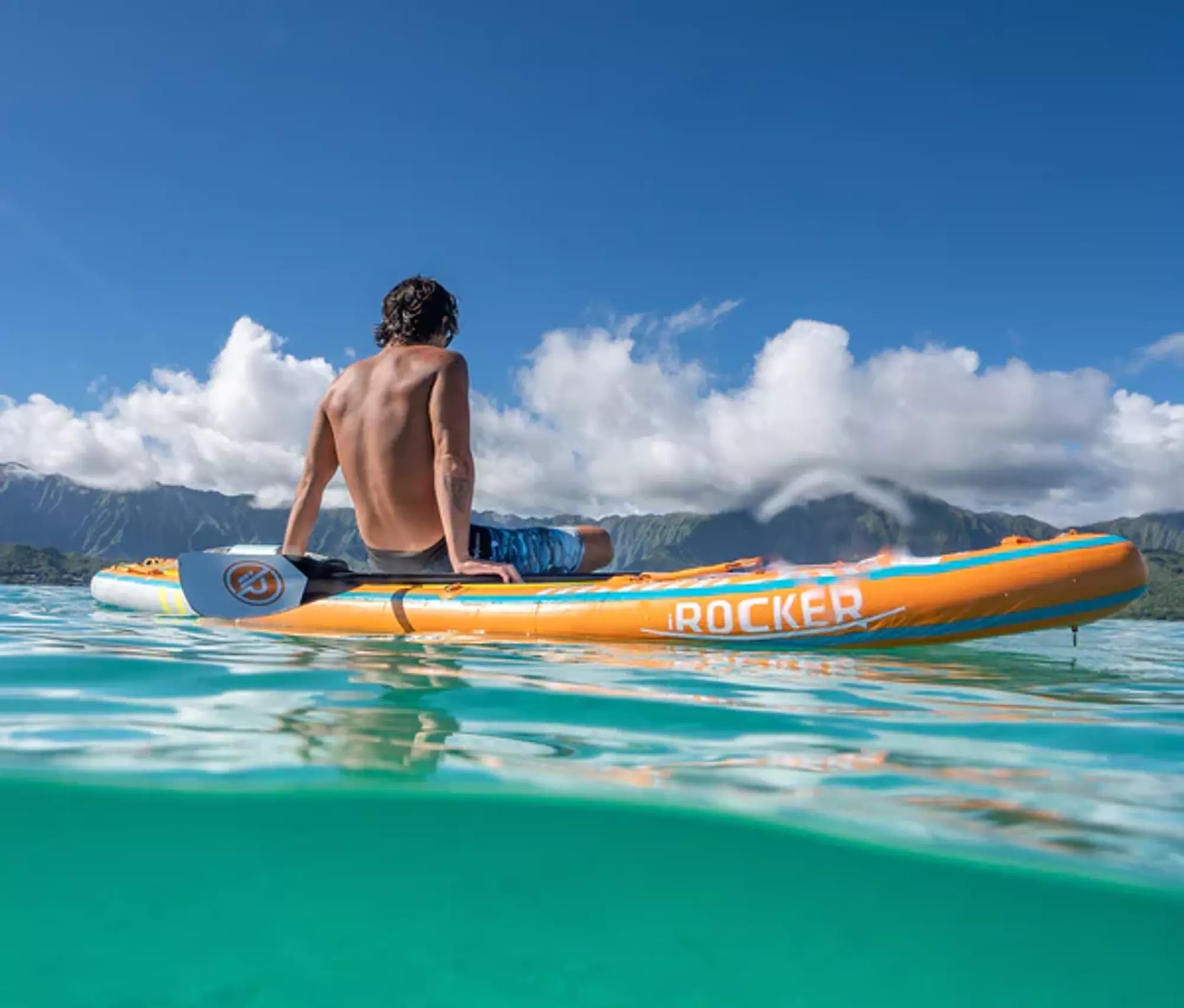Essential kayaking skills include paddling techniques, navigation, and capsizing recovery. Safety practices and environmental awareness are also crucial for kayakers.
Kayaking combines the tranquility of gliding on water with the thrill of navigating nature’s waterways. Whether you’re planning a serene solo journey or an adventurous trip with friends, mastering kayaking skills can elevate your experience and ensure your safety. Engaging in this water sport requires more than just effort; it demands knowledge of specific techniques, such as the forward stroke, sweep stroke, and the Eskimo roll for self-rescue.
Paddlers must understand how to read water conditions, choose the right equipment, and respect the kayaking environment. As such, rigorous practice and a dedication to learning are indispensable for anyone looking to thrive in the art of kayaking. With these skills in your repertoire, you’ll be ready to confidently explore lakes, rivers, and coastal waters.

Credit: www.coasttocoastpaddle.com
Introduction To Kayaking: Embracing The Waves
Are you ready to dance with the waves? Kayaking offers an intimate water dance like no other. With every stroke, glide, and maneuver, the bond between the paddler and nature grows. Kayaking opens doors to adventure, tranquility, and discovery. Whether it’s the thrill of wild rapids or the peace of a calm lake, the journey begins with mastering the craft. Let’s launch into the world of kayaking!
Understanding The Basics Of Kayaking
Before you can ride the waves, you must learn to speak their language. Kayaking requires a set of core skills. Proper paddling techniques, boat handling, and understanding water conditions are just the beginning. Let’s dive into the basic terms, gear, and strokes that will set the foundation for your aquatic adventures.
- Paddle Grip: Hold your paddle with both hands, a bit more than shoulder-width apart.
- Strokes: Learn the forward, reverse, and sweep strokes to navigate through the water.
- Exiting: Know how to safely exit your kayak, whether it’s planned or in an emergency.
Benefits Of Mastering Kayaking Skills
The rewards of kayaking stretch far beyond the shore. From building strength to fostering mental wellness, the benefits are as vast as the waters you’ll explore.
| Physical Health | Mental Health | Connection with Nature |
|---|---|---|
| Improves cardiovascular fitness | Reduces stress levels | Encourages wildlife encounters |
| Builds muscle strength | Enhances focus and creativity | Promotes environmental awareness |
Safety First: Preparing For The Water
Safety can’t be an afterthought. It must be your first focus. Preparing for your kayaking trip involves more than just having the right gear. It means understanding and respecting the water’s power. Here’s a checklist to ensure your safety:
- Life Jacket: Wear a properly fitting life jacket at all times.
- Weather Check: Always check the forecast before setting out.
- Plan Your Route: Know where you’re going and how to get back.
- Emergency Kit: Pack a kit with essentials like a whistle, rope, and first-aid supplies.

Credit: www.instagram.com
Fundamental Paddling Techniques
Welcome to a world where water and paddle meet to create joyous journeys! Kayaking stands out with its simple charm, and mastering the art truly begins with core paddling techniques. Paddling is to kayaking as breathing is to life. Let’s dive in and explore the strokes that will turn novices into nimble kayakers.
Proper Paddle Grip And Posture
Your paddle is your best friend on the water. The right grip and posture make all the difference. Hold your paddle with hands shoulder-width apart. Keep your knuckles aligned with the blade. Posture is a game-changer. Sit up straight, relax your shoulders, and engage your core muscles. A firm yet comfortable grip paired with upright posture sets the stage for efficient strokes.
The Forward Stroke: Propelling Your Kayak
The forward stroke is your kayak’s engine. To start, immerse one blade into the water near your feet. Push the water back with a smooth motion until the blade reaches just behind your hip. Alternate sides for a rhythmic motion. Use your torso to power the stroke, not just your arms. This technique moves you with less effort and more speed.
Navigating Turns With The Sweep Stroke
Tight turns call for the sweep stroke. Place the blade far out beside the kayak and sweep it in a wide arc. Think of drawing a big circle in the water. Your kayak turns swiftly. Perform the stroke at the front to turn the kayak’s nose. Do it at the back to swing the tail around. Practice makes perfect for smooth, sharp turns.
Mastering The Reverse Stroke And Stopping
The reverse stroke is essential for moving backwards or stopping. Dip the paddle blade into the water close to your hip and push it towards your feet. Keep it straight and close to the kayak. Pull the paddle out once it reaches your feet to stop the motion. Stay in control and avoid collisions with a solid reverse stroke and quick stop.
Advanced Maneuvering And Control
Mastering kayaking requires more than just paddling. In the realm of Advanced Maneuvering and Control, skills become precise and challenging. This section dives deep into techniques that elevate your performance on the water. Perfect these, and you become one with your vessel, ready to tackle any aquatic adventure.
Edge Control And Boat Tilting
Edge control is pivotal in kayaking. It means balancing your kayak on its edge. This skill allows smooth turns and stable rides. To master edge control:
- Keep your upper body upright.
- Use your hips to tilt the kayak.
- Practice in calm waters before trying rougher conditions.
Boat tilting, or leaning, complements edge control. It helps navigate turns and is crucial for quick maneuvers. Remember:
- Lean in the direction of the turn.
- Maintain a steady stroke while tilting.
Bracing To Prevent Capsizing
Bracing strengthens your stability during sudden shifts in water or unexpected obstacles. Two types of bracing exist: low brace and high brace.
| Brace Type | Use When | Key Tips |
|---|---|---|
| Low Brace | You’re tipped to the side. | Face your paddle’s power face up. |
| High Brace | You’re about to capsize. | Face your paddle’s power face down. |
Executing A Perfect Eskimo Roll
The Eskimo Roll is a must-have rescue skill. It flips your kayak upright if you capsize. To practice Eskimo Rolls:
- Start with a paddle float.
- Get comfortable flipping underwater.
- Snap your hips to roll the kayak up.
Perfecting this skill requires patience and repeated practice. Always learn with an experienced instructor.
Navigating Rapids And Rough Water
Rapids challenge even the most skilled kayakers. Rough water demands high proficiency in previous skills. Key tips include:
- Read the water before entering rapids.
- Keep a solid forward stroke.
- Use clear signals for group communication.
Understand the flow patterns and stay alert. Your reactions must be quick and confident.
Adapting To Different Kayaking Environments
Kayaking thrills with every paddle stroke. Yet, diverse waters test your skills differently. Mastering each environment’s challenges ensures safe, enjoyable adventures. Let’s dive into the essential skills needed for various kayaking conditions.
Coastal Kayaking: Dealing With Tides And Currents
Coastal waters present a dance of tides and currents. Understanding tidal patterns is key. Paddlers must also recognize signs of changing currents to stay safe. Here’s what to know:
- Study tide charts before setting out.
- Paddle during slack tide for easier control.
- Use landmarks to gauge current strength.
River Paddling: Strategies For Moving Waters
River kayaking brings moving waters into play. Quick reflexes and keen observation matter. Swift currents and sudden turns challenge even experienced kayakers. Employ these strategies:
- Keep your kayak angled downstream.
- Avoid obstructions like rocks or downed trees.
- Learn to read the river’s flow for the best path.
Lake Kayaking: Maximizing Efficiency In Still Waters
Lake kayaking offers a serene environment. Yet, calm waters mean less assistance for movement. Efficient paddling conserves energy. Smooth, consistent strokes are your friend. Remember:
- Maintain an upright posture for best power.
- Use your core muscles, not just your arms.
- Sync your strokes to move in a straight line.
Essential Gear For Various Kayaking Conditions
Right gear matches the kayaking environment. Adjust your equipment list based on the conditions. Be prepared:
| Environment | Essential Gear |
|---|---|
| Coastal | Spray skirts, Bilge pump |
| River | Helmet, Swiftwater rescue kit |
| Lake | Long-distance paddle, GPS device |

Credit: irockersup.com
Frequently Asked Questions For Essential Kayaking Skills
What Are The Required Skills In Kayaking?
Required skills in kayaking include paddling techniques, balance, strength, water safety knowledge, and the ability to perform self-rescues. Advanced skills include roll recovery and navigation.
What Are The Three Golden Rules Of Kayaking?
The three golden rules of kayaking are: Maintain proper posture, use your core for paddling power, and always look in the direction of your movement.
What Are The Basics Of Kayaking?
The basics of kayaking include mastering proper paddling techniques, learning how to steer and maneuver, understanding safety protocols, choosing the right kayak for your needs, and wearing a personal flotation device (PFD) at all times on the water.
What Are Four Mistakes In Kayaking?
Four common kayaking mistakes include improper paddling technique, neglecting weather conditions, failing to wear a life jacket, and overlooking the importance of a kayak’s weight limit.
Conclusion
Embracing these kayaking fundamentals can greatly enhance your paddling experience. From mastering your stroke to capsize recovery, every skill enriches your journey. Sharpening these abilities ensures safer, more enjoyable excursions. So grab your paddle, hit the waters, and let the adventure begin!

